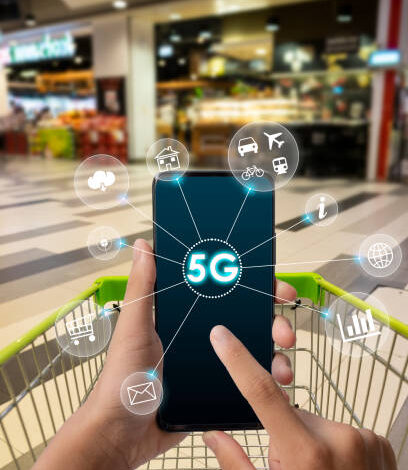The future of IoT: Trends and predictions
Exploring Emerging Trends and Bold Predictions in the World of IoT

The Internet of Things (IoT) has already revolutionised the way we interact with technology, connecting everyday devices to the internet and enabling seamless communication and data exchange.
As we step into the future, the potential of IoT continues to expand, promising even more transformative changes in various industries.
In this blog post, we’ll delve into the future of IoT, exploring emerging trends and making bold predictions about how IoT will shape our lives in the coming years.
From smart cities to edge computing and AI integration, the IoT landscape is set to evolve rapidly, and we’re here to guide you through the exciting journey.
The Rise of 5G and IoT Connectivity

According to StarDust Testing, 5G technology is poised to revolutionise the IoT landscape, offering faster, more reliable, and low-latency connectivity.
As 5G networks become more widespread, IoT devices will benefit from enhanced data transfer speeds and reduced response times, unlocking a new era of connected experiences.
With 5G’s high capacity to handle massive device connections, IoT deployments can scale up significantly, making large-scale smart city projects and industrial IoT applications more feasible.
Furthermore, 5G’s ability to handle massive data streams will enable real-time analytics and decision-making, empowering businesses and individuals with unparalleled insights.
As the synergy between 5G and IoT strengthens, we can expect a surge in innovative IoT applications and devices, ranging from autonomous vehicles and healthcare wearables to smart homes and industrial automation solutions.
Edge Computing
Edge computing is emerging as a game-changer in the world of IoT, addressing some of the challenges associated with cloud-centric architectures.
By processing data closer to the source, edge computing reduces data transfer delays and lowers the burden on centralised servers.
IoT devices generate vast amounts of data, and transferring all of it to the cloud for processing can strain network bandwidth and lead to latency issues.
Edge computing decentralises data processing, allowing critical insights to be generated and acted upon locally, in real-time.
For applications like autonomous vehicles and industrial IoT, where split-second decisions are vital, edge computing ensures timely responses.
Additionally, edge computing enhances data security and privacy, as sensitive information can stay localised within the edge devices.
As edge computing becomes more prevalent, it will revolutionise IoT deployment models, driving efficiency, reliability, and improved user experiences across various industries.
AI and IoT Integration
The convergence of AI and IoT is set to usher in a new era of intelligent, self-learning devices.
Techtarget says AI algorithms can analyse vast amounts of IoT data to identify patterns, trends, and anomalies, enabling smarter decision-making and predictive capabilities.
For instance, AI-powered smart homes can learn inhabitants’ preferences, adjust environmental settings, and anticipate their needs.
In healthcare, AI-driven IoT devices can monitor patient vitals in real-time, predict potential health issues, and provide personalised treatment recommendations.
As AI algorithms become more sophisticated and accessible, the integration of AI and IoT will democratise the development of intelligent applications, making them accessible to businesses of all sizes and industries.
Enhanced Security and Privacy Measures
The proliferation of IoT devices has raised concerns about security and privacy vulnerabilities. As the IoT landscape expands, safeguarding data and devices becomes paramount.
The future of IoT will witness advancements in security measures, such as hardware-based security modules, encryption techniques, and secure boot protocols.
Additionally, blockchain technology may play a significant role in enhancing the trust and security of IoT networks, ensuring tamper-proof data records and authentication.
Furthermore, data privacy regulations and consumer awareness will drive organisations to prioritise privacy in IoT deployments.
Tech Company News stated that implementing privacy by design principles and empowering users with granular control over their data will be crucial steps in building a secure and trustworthy IoT ecosystem.
Environmental Sustainability and IoT
IoT’s potential to optimise resource utilisation presents exciting opportunities for environmental sustainability.
Smart cities can harness IoT data to manage energy consumption, optimise traffic flow, and reduce waste generation.
In agriculture, IoT-driven precision farming can optimise water usage, monitor soil health, and promote sustainable agricultural practices.
The integration of IoT with renewable energy sources can also enhance energy efficiency and support the transition to greener power generation.
As environmental concerns take centre stage, IoT’s role in promoting sustainable practices will be pivotal in shaping a greener and more sustainable future.
The Consumerization of Industrial IoT
Industrial IoT (IIoT) is poised to revolutionise manufacturing processes, enhancing productivity, and driving innovation.
The consumerization of IIoT refers to the integration of consumer-grade technologies into industrial settings, making IIoT solutions more intuitive and user-friendly.
With the growing adoption of IIoT, connected sensors, predictive maintenance, and real-time analytics will optimise industrial operations, reducing downtime and optimising resource utilisation.
In addition to improving efficiency, IIoT will enable the creation of new business models, such as product-as-a-service and data-driven decision-making, leading to increased competitiveness and growth in the manufacturing sector.
Alright my dear readers, now let’s look into some frequently asked questions (FAQs) about The future of IoT.
What are the key trends shaping the future of IoT?
Key trends in the future of IoT include edge computing, 5G connectivity, AI integration, and increased focus on cybersecurity.
These advancements will drive IoT to new heights.
How will edge computing influence IoT development?
Edge computing allows data processing closer to the source, reducing latency and enhancing real-time decision-making in IoT devices.
It improves efficiency and unlocks new possibilities for IoT applications.
What role will 5G play in the future of IoT?
5G’s high-speed, low-latency capabilities will enable seamless connectivity for a massive number of IoT devices.
It paves the way for smart cities, autonomous vehicles, and other transformative IoT applications.
What are the predictions for the future of IoT?
The future of IoT holds exciting prospects, including widespread adoption in various industries, greater integration with AI and machine learning, and a surge in innovative IoT solutions to address global challenges.
Conclusion
The future of IoT promises a dynamic landscape of connectivity, intelligence, and innovation.
With 5G enabling faster and more reliable connectivity, edge computing driving efficiency, and AI integration bringing intelligence to IoT devices, we are on the cusp of a transformative era in technology.
As IoT continues to evolve, addressing security and privacy concerns, fostering environmental sustainability, and enhancing industrial applications will be paramount.
Embracing the opportunities and challenges that lie ahead, the future of IoT holds the potential to enrich our lives, drive economic growth, and shape a more connected and intelligent world.








